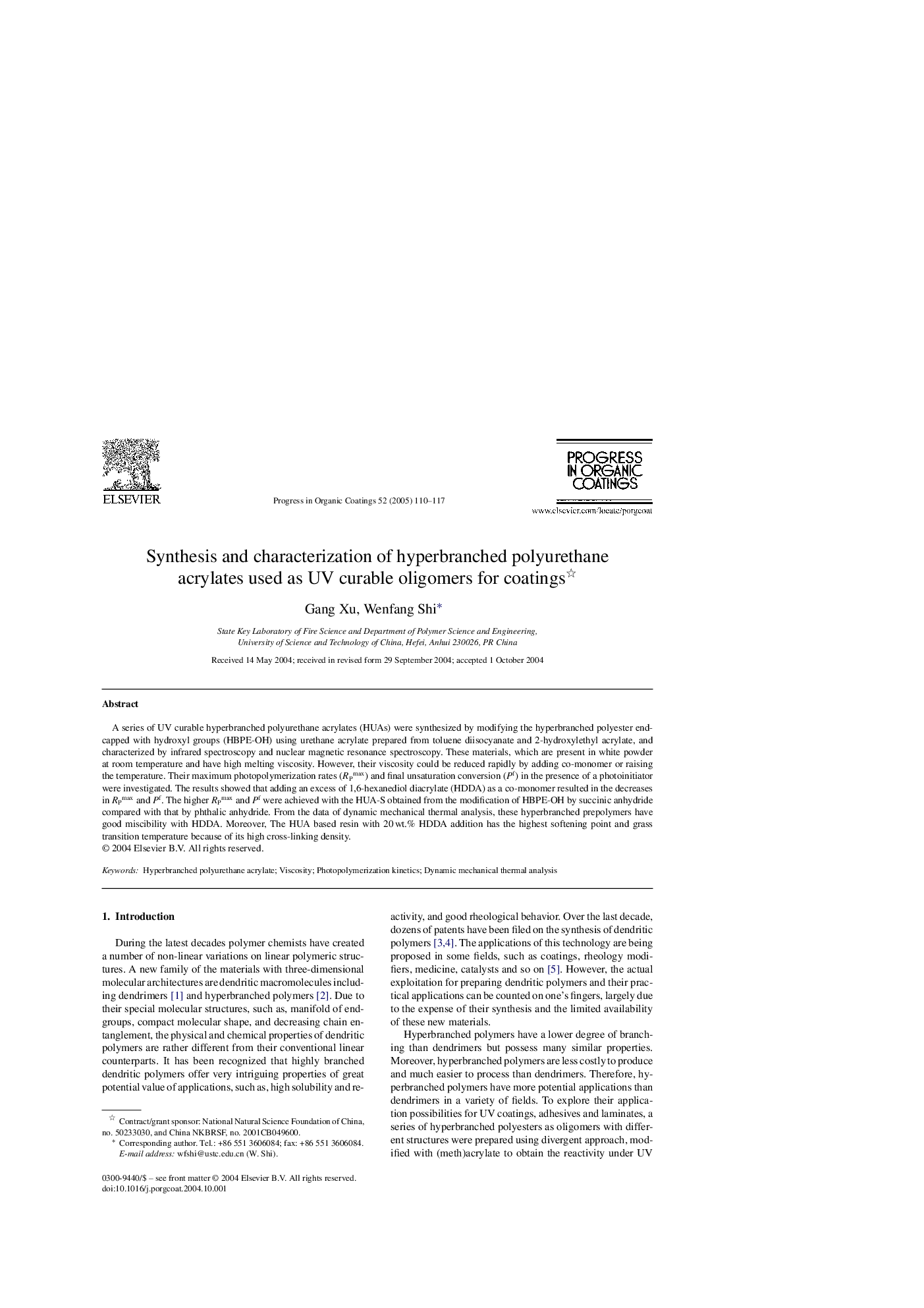| Article ID | Journal | Published Year | Pages | File Type |
|---|---|---|---|---|
| 10398037 | Progress in Organic Coatings | 2005 | 8 Pages |
Abstract
A series of UV curable hyperbranched polyurethane acrylates (HUAs) were synthesized by modifying the hyperbranched polyester end-capped with hydroxyl groups (HBPE-OH) using urethane acrylate prepared from toluene diisocyanate and 2-hydroxylethyl acrylate, and characterized by infrared spectroscopy and nuclear magnetic resonance spectroscopy. These materials, which are present in white powder at room temperature and have high melting viscosity. However, their viscosity could be reduced rapidly by adding co-monomer or raising the temperature. Their maximum photopolymerization rates (RPmax) and final unsaturation conversion (Pf) in the presence of a photoinitiator were investigated. The results showed that adding an excess of 1,6-hexanediol diacrylate (HDDA) as a co-monomer resulted in the decreases in RPmax and Pf. The higher RPmax and Pf were achieved with the HUA-S obtained from the modification of HBPE-OH by succinic anhydride compared with that by phthalic anhydride. From the data of dynamic mechanical thermal analysis, these hyperbranched prepolymers have good miscibility with HDDA. Moreover, The HUA based resin with 20Â wt.% HDDA addition has the highest softening point and grass transition temperature because of its high cross-linking density.
Related Topics
Physical Sciences and Engineering
Chemical Engineering
Process Chemistry and Technology
Authors
Gang Xu, Wenfang Shi,
